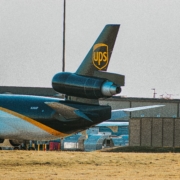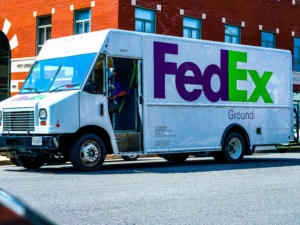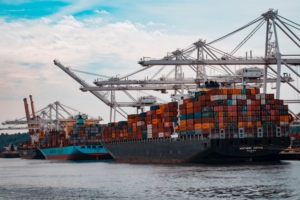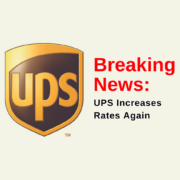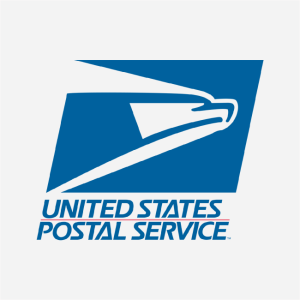UPS Teamster Update: It Still Ain’t Over
A Good News, Bad News, Good News Story
Well the results are in- UPS Teamster members have voted to accept the UPS contract offer that their leadership team had tentatively accepted back on July 25, 2023. The contract was overwhelmingly accepted with 86.3 % of UPS Teamsters voting yes to the deal. Shippers no longer need to worry about the possibility of a strike. Obviously this is the Good News Story. But what impact will this new agreement have on the market place and your business? Our intent is to provide you with some insight regarding what to expect moving forward, and to help you build a strategy to minimize the impact of market changes.
Now that we know the good news, let’s talk about the bad news. There is probably no need for us to get too deep into the increases that UPS workers will receive through this new deal. There have been many stories in the media that describe how UPS Driver pay will go to $170K per year. Part time workers will see increases in pay by as much as 48% over the life of the agreement. Additionally, UPS made many other concessions that will prove costly for them in the coming years.
UPS Leadership acknowledged that the new Teamster agreement will have a big impact on their costs. In their latest earnings release earlier this month, UPS cut its full-year revenue and profitability targets, citing higher-than-expected labor costs and business lost during the contract talks with the Teamsters.

So, shippers that use UPS should brace themselves for the record level rate increases that ICC and other experts have been predicting for some time now. For those shippers that use FedEx and other parcel carriers, don’t think that you are off the hook. As we all know, history repeats itself. So, why wouldn’t FedEx just match the increases that UPS will announce later this year to help them improve their profit margins as they have in the past? This is really a no brainer.
If you think that Amazon’s expansion into the Parcel delivery market will help keep costs down, guess again. The Teamsters have been very vocal about their desire to drive higher salaries for Amazon workers. Teamster General President, Sean M. O’Brien has been quoted as saying, “Teamsters have set a new standard and raised the bar for pay, benefits, and working conditions in the package delivery industry. This is the template for how workers should be paid and protected nationwide, and nonunion companies like Amazon better pay attention.”
Adding to the bad news is the recent Yellow Freight bankruptcy. Thankfully, in the short term, excess capacity in the LTL market seems to have staved off any major impacts on cost. But, what will happen as capacity starts to tighten during the upcoming holiday peak season? Estes and Old Dominion have made offers for Yellow Freight assets, which could help these carriers grow their respective market share. So, what impact could this have on LTL prices? Obviously still a lot of unanswered questions here. But, many things point to higher costs for the LTL market as well
So now for some more good news. The bottom line is that smart shippers can plan ahead to help protect themselves from substantial increases in costs and further erosion of profit margin. Here are some of our recommendations for you to consider as you build your cost avoidance strategy;
1.Time to Assess your Parcel and Freight Carrier Agreements. Many things need to be considered here. Many shippers have the ability and resources to take a high level view of where they stand with their Parcel Agreements. There are some easy things to look at. For example, When does my agreement expire? Do I have any language in my agreement that would prevent me from renegotiating my agreement now? When was the last time I renegotiated my agreements? Is my company in a position to consider a move to another parcel carrier? How much has my business changed since I last negotiated my current parcel agreement?
2.Time to take a holistic view of your current Transportation & Logistics Programs – Many shippers are utilizing outdated Transportation and Logistics Systems . In many cases, these legacy programs were built at the start-up of the business, and never changed. They are often built around older internal systems, which limited the ability for changes in order fulfillment. Companies that started out regionally may now be selling nationally and globally. All of this results in added cost for shippers.
Here are some questions to consider with this; What are your options? Are you in a position to consider the use of Regional Carriers, or other Final Mile, or Middle Mile Carrier options that have sprung up in the last few years? Can your current systems support the addition of new carriers? Are you using the right LTL carriers for your product/ customers/ market? Is your current Distribution Center, or 3PL in the right place to ensure lowest cost/ fastest delivery to your customers? Should you upgrade your current TMS/ WMS systems?
3. Time to talk to the experts – Many companies are hesitant or reluctant to bring in outside help or consultants. Transportation and Logistics leaders often feel that they know enough to negotiate their own deals and make their own decisions. CFO’s and other company leaders think they don’t need to bring in experts because they have the right people on their staff that have the expertise to ensure that they are getting the most from carriers.
 The bottom line is this- even if you have the best Logistics and Transportation people on your staff, there is no way for them to possess the vast data and insight that the experts can provide. Here is a great way to look at this. The best and most experienced Transportation and Logistics leaders probably have been involved in dozens of Parcel and Freight negotiations during their careers. They also could have worked at many different companies. So maybe they have some good insight. However, Logistics consultants have been involved in hundreds or even thousands of Parcel and Freight negotiations, for hundreds/ thousands of different companies. Also, in many cases (like at ICC), they have sat at the carrier side of the negotiating table.
The bottom line is this- even if you have the best Logistics and Transportation people on your staff, there is no way for them to possess the vast data and insight that the experts can provide. Here is a great way to look at this. The best and most experienced Transportation and Logistics leaders probably have been involved in dozens of Parcel and Freight negotiations during their careers. They also could have worked at many different companies. So maybe they have some good insight. However, Logistics consultants have been involved in hundreds or even thousands of Parcel and Freight negotiations, for hundreds/ thousands of different companies. Also, in many cases (like at ICC), they have sat at the carrier side of the negotiating table.
The experts are much more in tune with current pricing and market trends. Parcel and Freight agreements usually have 1-3 year terms. A lot can change in the market during these time periods. Good consultants have a vast amount of recent carrier invoice data that can be used to benchmark against the current market. The experts are involved with this on a daily basis, so they know what to ask for and when and how to ask for it.
Company leaders need to realize that Logistics consulting experts are not looking to replace, or make their Logistics and Transportation teams look bad. The main goal is to make these teams smarter/ stronger and to provide them with the tools that they do not have to help them drive the greatest savings possible, without compromising service to customers.
Naturally, company leaders are often concerned about the cost of engaging with Transportation/Logistics consultants. The good news here is that most of these consultants are willing to work on a gain share basis, meaning that they will not pay anything unless the consultants can drive savings for them. It is not unusual for shippers that partner with a Logistics consulting firm to experience an ROI of 5X-10X or more.
The ICC Logistics team has had tremendous success with helping customers build their own good news/ success stories. We are looking to continue to spread the good news. So, please reach out to us today to find out how we can help you prepare for the expected changes in the Transportation and Logistics marketplace. We are certain that we can deliver solutions that will protect your margins and enhance service to your customers.

